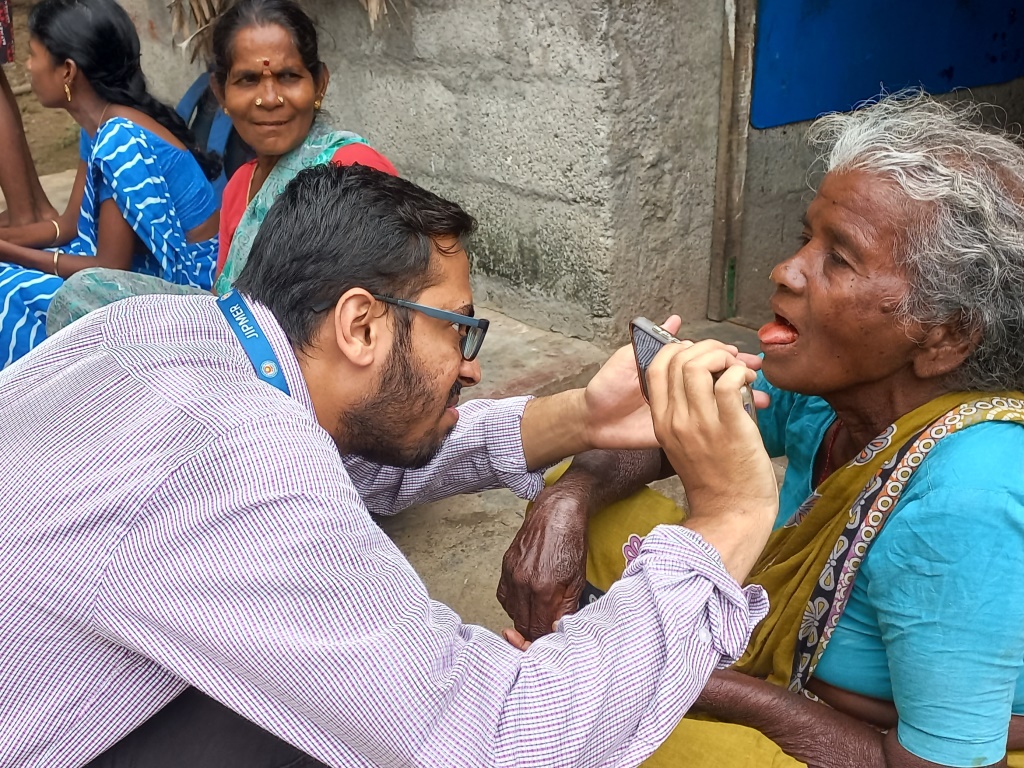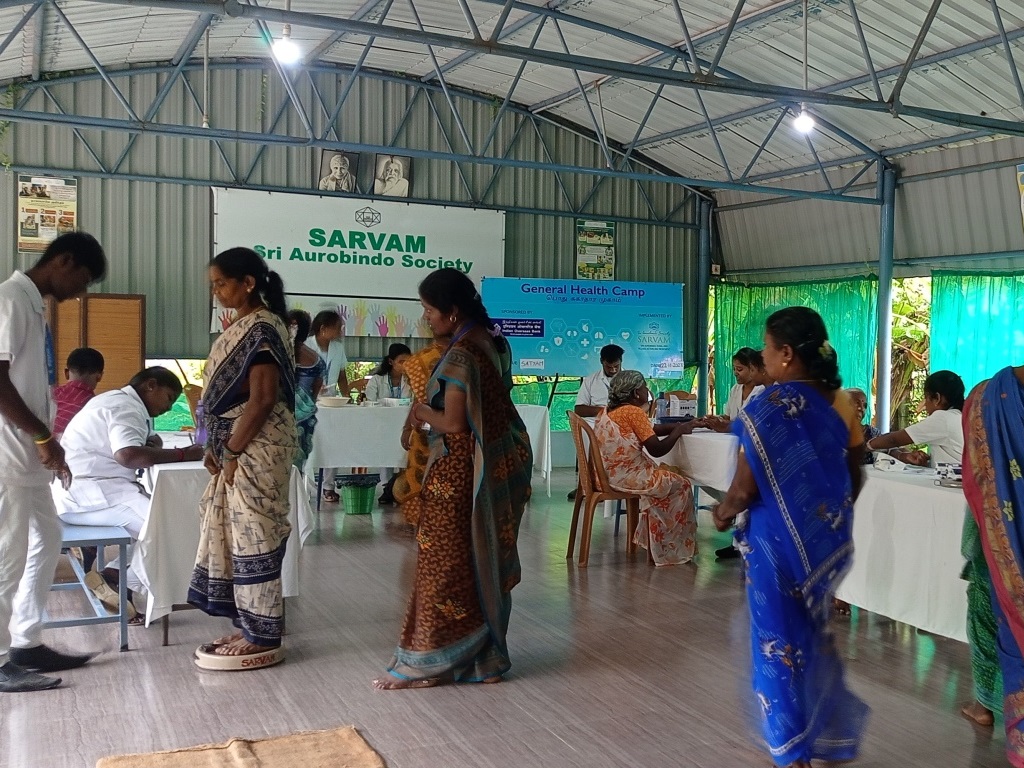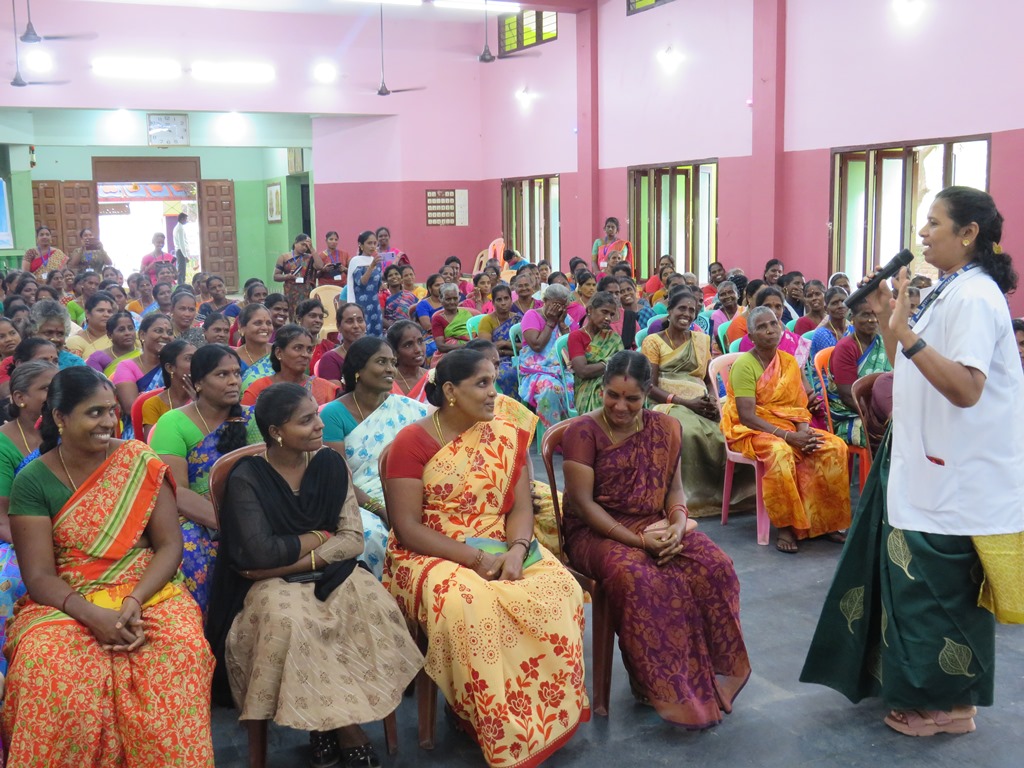Empowering Health and Hygiene: SARVAM’s Transformative Impact
Health and hygiene, two of the most important aspects of the overall human well-being and growth, are neglected by rural populations in India due to illiteracy, lack of basic clean habits, and ignorance.Sarvam’s foremost contribution in the fields of Health and Sanitation has been creating awareness and providing knowledge on the various aspects of maintaining good health, the importance of cleanliness and hygiene, and the hazards of insanitary habits and polluted environment.

There has been a complete transformation in the attitude and outlook of the people of the adopted villages in this regard, they are now greatly self-motivated in maintaining their own health and hygiene and that of their families and community as a whole. The progress in these areas is very encouraging and visible. The integrated programs in these areas have resulted in better health and lifestyles for the people, leading neighbouring villages to take up similar initiatives to create a better way of living for themselves.
Image Gallery



Enhancing Health Access: SARVAM’s Comprehensive Medical Initiatives
Due to the on-going efforts of Sarvam, the government sub-health centre at Poothurai is functioning effectively. It caters to the basic health-care needs of the nearby villages, and the volunteers at this centre facilitate specialized medical treatment for the people of the villages at the nearby Sree Lakshmi Institute of Medical Sciences (SLIMS) hospital.
A major achievement has been the issuing of a referral health card, in collaboration with premier medical institutes in Puducherry such as the Pondicherry Institute of Medical Sciences (PIMS) and the Aravind Eye Hospital. Nearly 90% of the population is now covered under various health programmes.
Regular health camps are conducted in the villages for basic scans, ECG, check-up of blood sugar levels, etc. Periodical dental camps, eye treatments, surgeries, immunization camps for children and expecting women, etc., in collaboration with premier hospitals such as JIPMER, PIMS and SLIMS were organized.
Dr Tamilarasi from the Government Maternity Hospital in Puducherry has started a monthly session with the women, where she talks about general health care, hygiene, maternal care etc. Recently, an eye camp was arranged in collaboration with Aravind Eye Hospital (a renowned hospital chain in south India), where eye check-ups and subsequent follow-ups were done for over 350 children.
Transforming Communities: SARVAM’s Sanitation Revolution
The absence of basic habits of maintaining hygienic and sanitary conditions lead to many illnesses and diseases, which in turn lead to major social and economic problems in the day-to-day lives of families, and even community as a whole. Educating the people and creating awareness among the people about clean surroundings and overall health was one of the pioneering initiatives of Sarvam.Even elementary and basic amenities such as toilets (most people defecated in the open, creating very dirty, unhygienic surroundings) and clean, potable water were absent in these villages before they were adopted under the Sarvam program. Some of the successes of the program in this field are as follows:
In 2005–2006, at the beginning of our sanitation project, construction of 60 toilets was taken up during the first phase. The ‘Sulabh’ model, which is approved by WHO was adopted for the project after securing the approval of the villagers.
By October 2007, 130 toilets had been constructed, and since then 30–40 toilets have been added to the village every year. Sarvam’s awareness drive about sanitation, toilet culture and its toilet construction programs have resulted in 30% of the households having personal toilets whereas it was only 1% at the time of commencement of Sarvam’s project.
More and more households are taking up the construction of toilets with government assistance. They are efficiently managing the construction by following the Sarvam model. Due to material and other construction costs, Sarvam is assessing the best options available that will be less expensive, cost-effective, and sustainable.Regular workshops on garbage disposal and waste management are being held in the various parts of the villages.
Studies are being conducted to improve the quality of water. In addition, reproducible and economical water purification techniques and processes are being undertaken to make pure and safe drinking water easily accessible to every household.
In addition, Sarvam’s collaboration with NSS volunteers to plant trees and encourage people of the villages to cultivate gardens in their homes is an endeavour towards a green environment, conducive to the enhancement of health and hygiene.
